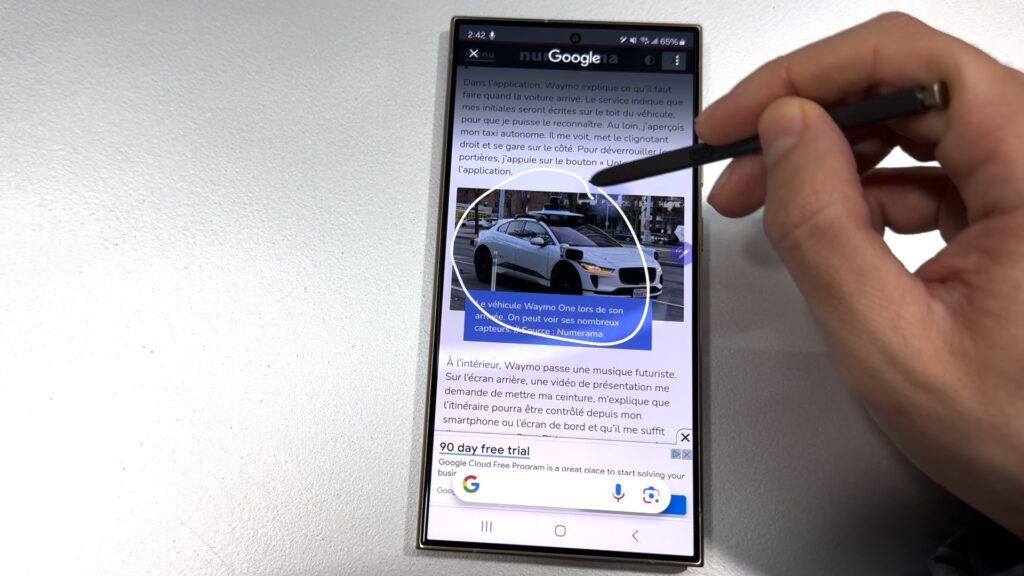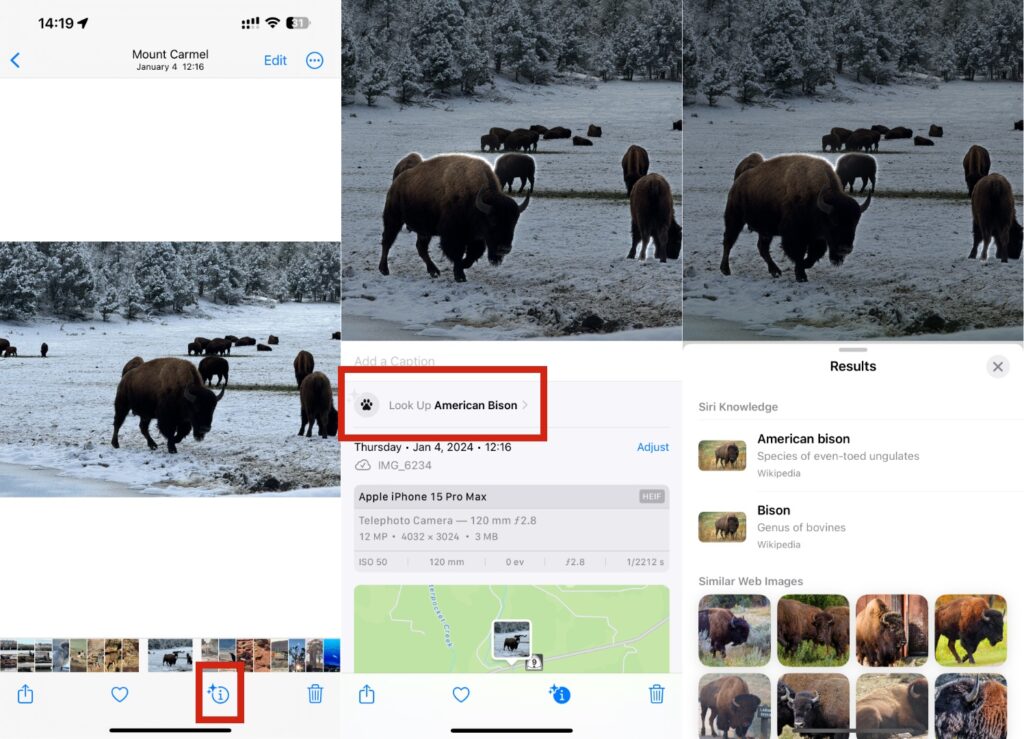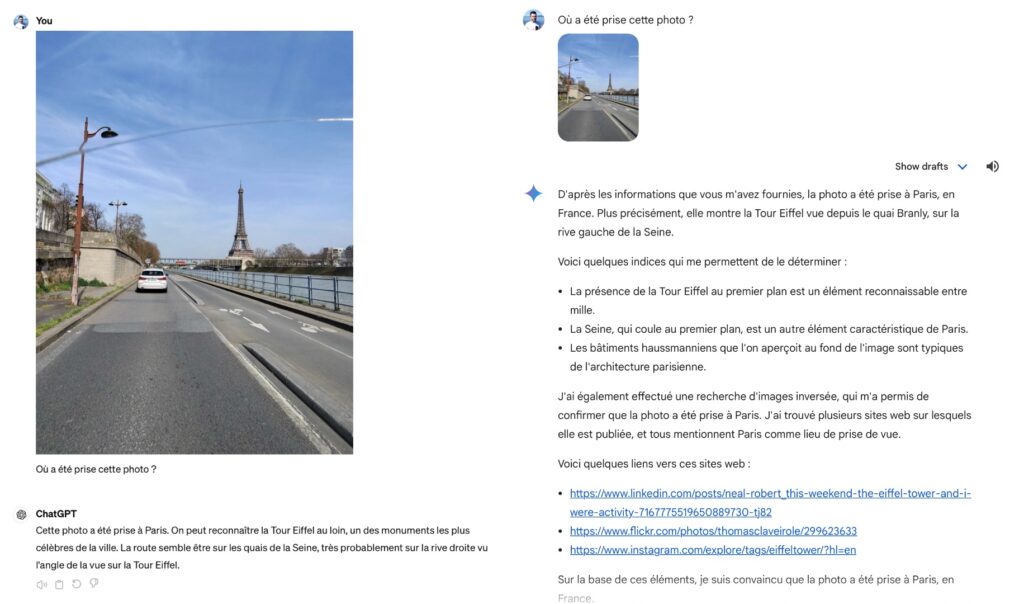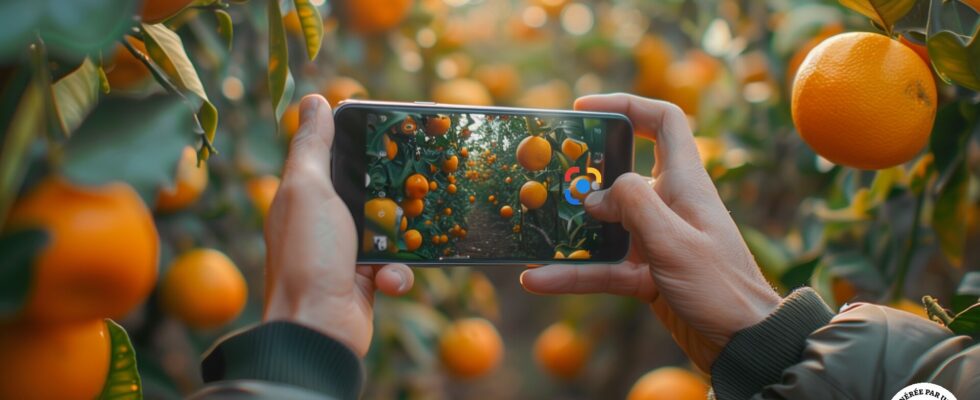Thanks to artificial intelligence, more and more services are able to recognize the content of an image. To identify an insect, a plant or a landscape, it only takes a few seconds.
Carrying out a search using a simple image is possible in 2024. This technological fantasy, long presented in detective series as a way to identify a person’s identity in a few seconds, has become accessible on n any smartphone.
Thanks to dedicated software (or functions embedded in our devices), it is possible to upload an image to find similar content. Generative artificial intelligences, such as ChatGPT, Google Gemini or Meta AI, also have an image recognition model, which makes it possible to obtain a description of a photo.
Google Lens: the simplest application on iPhone and Android
The Google Lens service, developed by the web giant, is dedicated to image recognition. It does not have its own application on iOS, but is operational from the Google application. By pressing the camera-shaped logo, you can take a photo or uploader an existing image.

On Android, Google Lens exists as a separate app. The concept is exactly the same: you take a photo and wait to get a result.
When you send a photo to Google Lens, the service analyzes it and returns similar images with captions. This makes it possible to precisely identify an animal, a plant, an object, a piece of clothing or a landscape. Its database is terribly efficient.
Circle to search: Android’s built-in image search
Inaugurated exclusively on the Samsung Galaxy S24, the “Circle to Search” function natively integrates Google Lens into Android.
Extended to Pixel terminals, pending deployment on other Android smartphones, it allows you to surround the content of your screen to perform a reverse search.
How it works ? You must press the navigation bar at the bottom of the screen (or the button if you use the touch buttons). Then, circle the desired item, a piece of clothing for example, and wait a few seconds. The results are the same as with Google Lens.


Apple Look Up: a solution integrated into Photos
Circle to search has no equivalent on iOS, even if Apple integrates a native image recognition function into its application Pictures. It is very limited since the iPhone chooses eligible and ineligible images, but allows you to identify an animal, a plant or cryptograms in one tap. If all goes well, iOS 18 should expand Apple’s image recognition capabilities.


Send an image to ChatGPT or Gemini: absolute recognition
Finally, since the end of 2022, new solutions have emerged for image recognition: generative artificial intelligence.
ChatGPT (in its paid version), Google Gemini, Microsoft Copilot, Meta AI… All these tools can analyze an image and tell you what they see, even if they happen to hallucinate and lie. The vast majority of the time, the responses remain impressive, especially in the event of a problem. A sink leak or injury can be diagnosed in seconds by ChatGPT or Gemini.


In 2024, the only thing that image recognition tools cannot do, voluntarily, is identify a person. Celebrities will be recognized, but the databases of the web giants are prohibited from using facial recognition on anonymous people, for reasons of privacy. Google or Meta can, technically, identify a face in a few seconds, but do not allow the general public to do so.
Subscribe for free to Artificielles, our newsletter on AI, designed by AIs, verified by Numerama!
